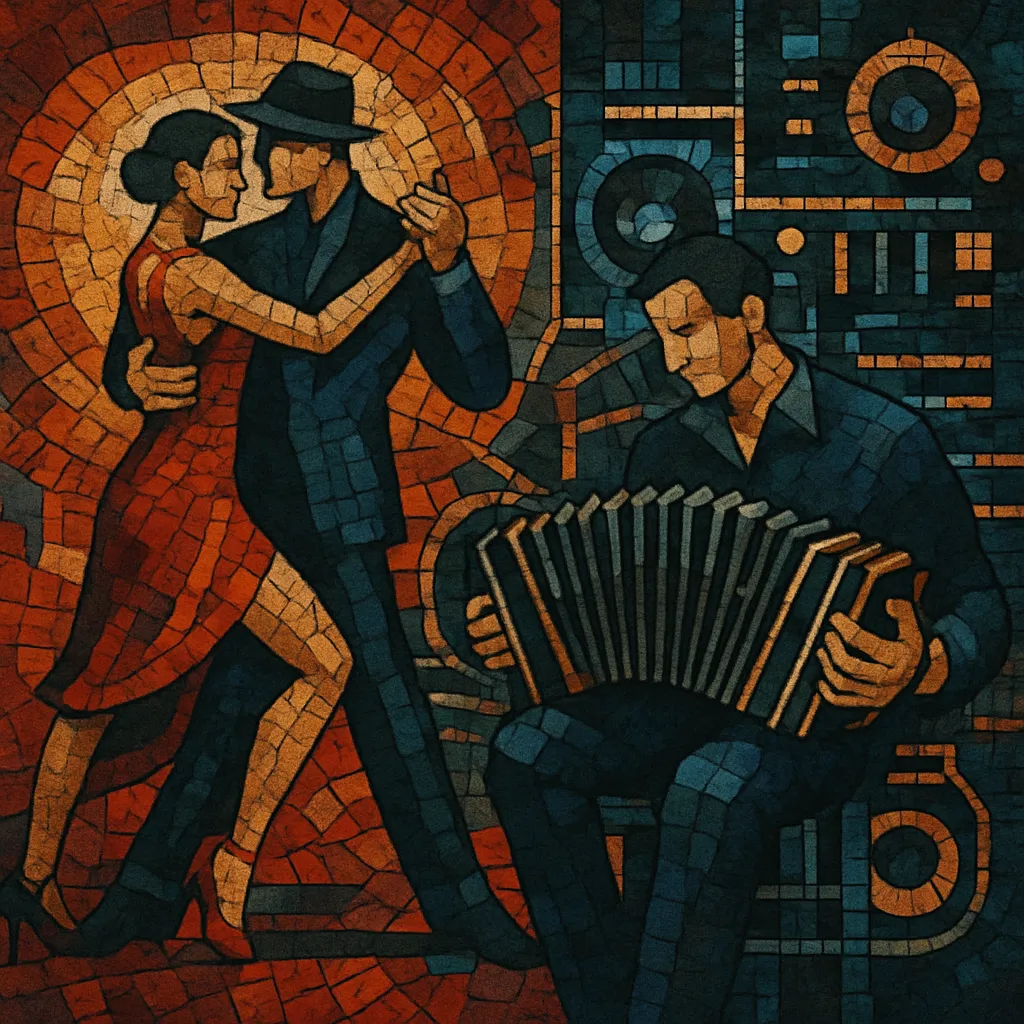Electrotango (often called tango electrónico) fuses the melodic drama, syncopated phrasing, and emblematic bandoneon timbre of Argentine tango with contemporary electronic production.
Producers blend sampled or newly recorded tango ensembles (bandoneon, violin, piano, double bass, guitar) with downtempo, trip-hop, and house beats, warm analog-style bass lines, and ambient textures. Tempos commonly range from 90–120 BPM for lounge/downtempo contexts and up to 120–128 BPM for club-focused remixes.
Core rhythmic cells include the tango’s 3–3–2 syncopation, habanera-derived grooves, and marcato patterns, while harmonies favor minor keys, chromatic lines, and bittersweet cadences that accentuate tango’s nostalgic and urban character.
Astor Piazzolla’s nuevo tango (1950s–70s) modernized tango with jazz harmony and classical forms, laying conceptual groundwork for future fusions. By the late 1990s, Buenos Aires club culture, European electronica, and improved digital production tools converged, encouraging producers and instrumentalists to experiment with tango in an electronic context.
The genre’s global profile surged in the early 2000s. Gotan Project’s “La Revancha del Tango” (2001) reframed tango for international downtempo and lounge audiences, pairing soulful bandoneon and strings with trip‑hop beats and dubby space. Soon after, Bajofondo Tango Club (2002) united Rio de la Plata traditions with cinematic production and beat‑driven arrangements, while Argentine acts like Tanghetto (“Emigrante,” 2003), Otros Aires (from 2003), and Narcotango (from 2003) created distinctive strands ranging from moody, minimal grooves to more dance‑floor‑ready hybrids.
During the 2010s, electrotango matured into a flexible performance format—DJs and live bands shared stages at festivals, clubs, and neo‑milongas. The sound diversified: some artists leaned toward deep house and techno textures; others emphasized acoustic ensemble interplay with subtle electronics. Film/TV placements and global touring helped establish scenes across Europe (France, Germany, Scandinavia), Latin America (Argentina, Uruguay), and beyond.
Electrotango remains a gateway for new listeners discovering tango, a tool for contemporary dance communities, and a model for culturally sensitive fusion. Its production aesthetics—tasteful sampling, live/electronic interplay, and groove‑aware arranging—continue to inform world‑oriented electronic projects and cross‑genre collaborations.


